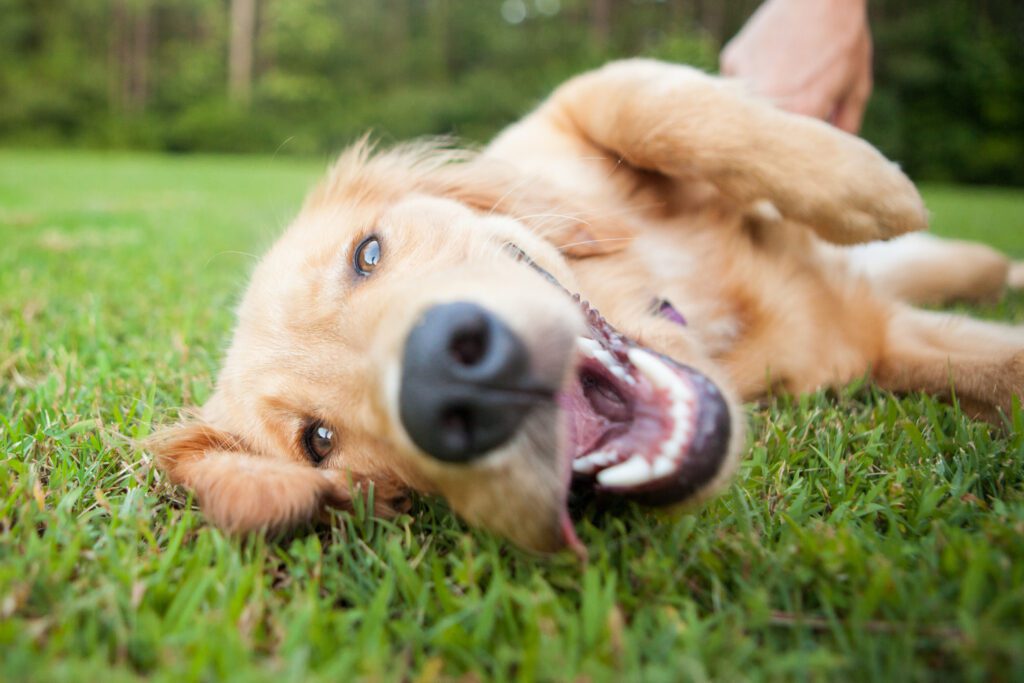Summer holidays have never been so close! The perfect season for relaxing by the pool, visiting a new country or lazing on the beach. But like every year, are you wondering what to do with your furry friend? Sometimes going on holiday can be a real headache for pet owners… Dog Chef explains the different options available to you and your furry friend.
If it is impossible for you to detach yourself from your faithful companion during your holidays, be sure to choose a destination that meets both your needs and theirs. Avoid going to countries that are too far away, which impose a long and tedious journey, too strict entry conditions, risks of infections or temperatures that are too high or even unbearable. Rather choose quiet places with greenery such as the countryside or the mountains where your dog can enjoy nature and explore every nook and cranny.
? Dog-friendly: If you plan to rent accommodation, go camping, get away to the sea or go hiking, your furry friend will certainly be very happy to be invited. Especially if he is full of energy and likes to play in the water. Be careful, however, to find out whether dogs are allowed on the beaches where you go and, if you are camping, find out about the regulations concerning dogs.
⛔ Dog not recommended: If you plan to spend two weeks by the hotel pool or go on a city trip with museum visits, we don’t recommend taking your doggie. He might get bored and not enjoy his vacation as much as you do.
Once the destination has been chosen, it is now necessary to determine the mode of transport. Car, train, plane… what is the most pleasant way to travel with your furball and, above all, what are the rules to follow?
? Dog-friendly: Travelling by car with your dog is allowed but regulated to guarantee your safety and his. As the animal is considered to be a passenger of the vehicle, it must have its secure place and can be installed in different ways:
Be sure to always provide a bowl and a bottle of water to hydrate your doggie at any time during the trip. For long journeys, also remember to take something to feed your furry friend.
In very hot weather, ventilate the vehicle regularly by opening the windows to refresh and renew the ambient air. Never leave your dog locked in the car. If you have to be away (for a very short time only!), open the windows, turn on the air conditioning or equip yourself with a boot opener which will have the function of keeping the boot slightly ajar, allowing air to circulate better.
Since dog motion sickness is a fairly common problem, the use of correctly dosed medication will significantly reduce your pooch’s stress. Ask your veterinarian before administering any.
⛔ Dog not recommended: Sick or very old dogs will find it difficult to endure long journeys, which is why we do not recommend that you take them with you. This also applies to pregnant female dogs.
? Dog-friendly: Travelling by train with a dog is recommended for their comfort as well as for yours. However, there are some restrictions:
When you travel by plane with your animal, it is important to specify it when buying your plane ticket, because some airlines refuse animals on board. Travelling by plane with your dog is paid and the pricing varies depending on the company.
? Dog-friendly: The most reputable companies for travelling with a dog are: Vueling, Air France, Lufthansa, Transavia and Iberia.
Small dogs (max 7kg including cage) are allowed to travel in the cabin with you, in a carrying bag that you can place under your seat. Dogs weighing more than 7kg will have to travel in the hold in their transport cage.
Many companies require that the transport cage is approved by IATA. This implies certain obligations:
If your dog has to travel in the hold, plan to introduce him to the cage ahead of time for a few weeks or even a few months. Once he is used to it, your pooch will be less anxious on the plane. Before departure, leave your dog outside as much as possible, and do not give him too much food. We advise you to give him a light meal two hours before departure.
⛔ Dog not recommended: If your dog is sick, elderly, a very young puppy or has motion sickness, we strongly advise against travelling by plane with him. Especially if he has a flat muzzle (flattened or upturned nose). These breeds can suffer from breathing difficulties under stress. This mainly concerns the following breeds: Bulldog, Boxer, Pug, Chow Chow, Boston Terrier, Pekingese.
If you are travelling with low-cost airlines such as Easy Jet and Ryanair, be aware that they do not accept any animals on board, with the exception of guide and assistance dogs on certain routes.
Good to know: the pressure at high altitude can increase the risk of cardiovascular and respiratory problems. The use of certain medications or tranquillisers is therefore not recommended. Consult your veterinarian for more information on this.
Hotel, Airbnb, camping, villa rental,… It is not always easy to find accommodation where dogs are allowed. But don’t panic, we have the solution!
First of all, when doing your research, filter by selecting only accommodations that accept animals. Then there will be no bad surprises, and you can leave serenely with your furry friend.
If despite everything you do not find the ideal accommodation, go to Emmène Ton Chien, an interface which offers hundreds of advertisements for accommodations where dogs are welcome. All you need to do is indicate your criteria (number of dogs, weight, city, etc.) and choose from a selection of accommodations. Campsites, lodges, hotels,… there is something for everyone!
Like for us, each dog has its own papers, essential to be able to travel. Be sure to bring his European passport or any other official document containing the information relating to the vaccines, as well as the policy number of your dog’s civil liability insurance.
Before your departure, we recommend that you pay a visit to your veterinarian so that he can examine the general state of health of your doggie, update his vaccinations and treat him against parasites (essential if you are travelling in the south of France).
Some countries have very strict health requirements. The vaccines most often required abroad are against: rabies, distemper, Rubarth’s hepatitis and parvovirus. So be sure to check with the embassy of the country where you want to go.
To leave with peace of mind with your furry friend, Dog Chef has concocted a checklist for you that includes the essentials that his suitcase must contain. With all this, you won’t miss anything. You’re in for a barkingly good summer!
Are you planning to travel to Belgium, France, Luxembourg, the Netherlands or Germany? That’s good, we also deliver to these countries! All you have to do is modify your subscription directly in your Dog Chef account and change the address, delivery date and adapt the quantities as you wish.
You can decide to take the sausages on holiday yourself. Remember to place them in an electric cooler so as not to break the cold chain. Hey presto, voila!
If the delivery date of your Dog Chef order lands while you are abroad. You can modify it by going to your Dog Chef account, so that it is delivered to you when you return from holiday.
Want to know more about how to manage Dog Chef while on holiday? Read all about it in this article.
Have you decided to take time for yourself and only you? Have you ever thought about having your furball taken care of by a dog sitter? Home caretaker or house sitter, many possibilities are available to you. As a result, you will be sure that the habits of your furry friend will be respected and that he will find himself in a warm environment.
Finally, keep in mind that the more organised you are, the easier it will be to travel with or without your dog. Take enough time to plan your vacation in order to fully enjoy it.
Will your pooch be part of the trip? Tell us in the comments!The whole Dog Chef team wishes you and your furry friend an excellent summer holiday!



Votre navigateur est obsolète!
Mettez à jour votre navigateur pour afficher correctement ce site Web. Download Google Chrome